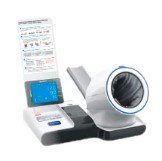The Impact of Tariff Costs on Medical Laboratory Supplies: Challenges and Strategies
Summary
- The potential increase in tariff costs may lead to higher prices for medical laboratory supplies in the United States.
- Healthcare Providers may need to reevaluate their budgets and financial strategies to accommodate the higher costs of supplies.
- Quality of patient care may be affected if Healthcare Providers are unable to afford essential laboratory supplies due to increased pricing.
The Impact of Tariff Costs on Medical Laboratory Supplies
Medical laboratories are essential components of the healthcare system, providing critical testing and diagnostic services to patients. These facilities rely on a wide range of supplies and equipment to perform their functions effectively, from test tubes and microscopes to reagents and chemicals. With the potential increase in tariff costs impacting the pricing of medical laboratory supplies in the United States, Healthcare Providers may face significant challenges in maintaining high-quality care for their patients.
Potential Increase in Tariff Costs
The United States has recently been involved in trade disputes with several countries, leading to the imposition of tariffs on a variety of imported goods. Medical laboratory supplies are no exception, with many essential items being manufactured overseas and subject to these tariffs. As a result, Healthcare Providers may see an increase in the cost of supplies, which could have far-reaching implications for their operations.
Higher Prices for Medical Laboratory Supplies
One of the most immediate impacts of the potential increase in tariff costs is higher prices for medical laboratory supplies. With suppliers passing on the additional costs of tariffs to Healthcare Providers, budgets may become strained as expenses rise. This could force providers to make difficult decisions about which supplies to prioritize and where to cut costs, potentially impacting the quality of care they can deliver.
- Healthcare Providers may need to explore alternative suppliers or sources for their laboratory supplies to mitigate the impact of increased pricing.
- Some providers may consider passing on the higher costs to patients through increased fees for laboratory tests and services.
- Collaboration among healthcare facilities to bulk purchase supplies and negotiate better pricing may become more common to offset tariff costs.
Financial Strategies and Budget Considerations
As Healthcare Providers face the prospect of higher prices for medical laboratory supplies, they may need to reevaluate their financial strategies and budget considerations to adapt to the changing landscape. This could involve allocating additional funds for supplies, seeking cost-saving measures elsewhere in their operations, or exploring new revenue streams to offset the increased costs. Collaboration with other facilities or healthcare networks may also provide opportunities for shared resources and purchasing power to negotiate better pricing with suppliers.
Quality of Patient Care
Ultimately, the impact of increased tariff costs on medical laboratory supplies may have ripple effects on the quality of patient care provided by Healthcare Providers. If providers are unable to afford essential supplies due to higher pricing, they may be forced to limit testing capabilities, delay diagnoses, or make compromises that could impact the accuracy and reliability of Test Results. This, in turn, could have implications for patient outcomes and satisfaction, as well as the overall efficiency and effectiveness of the healthcare system.
In conclusion, the potential increase in tariff costs for medical laboratory supplies in the United States poses significant challenges for Healthcare Providers. By understanding the implications of these changes and exploring strategies to mitigate their impact, providers can work towards ensuring the continued delivery of high-quality care for their patients despite the challenges they may face.

Disclaimer: The content provided on this blog is for informational purposes only, reflecting the personal opinions and insights of the author(s) on the topics. The information provided should not be used for diagnosing or treating a health problem or disease, and those seeking personal medical advice should consult with a licensed physician. Always seek the advice of your doctor or other qualified health provider regarding a medical condition. Never disregard professional medical advice or delay in seeking it because of something you have read on this website. If you think you may have a medical emergency, call 911 or go to the nearest emergency room immediately. No physician-patient relationship is created by this web site or its use. No contributors to this web site make any representations, express or implied, with respect to the information provided herein or to its use. While we strive to share accurate and up-to-date information, we cannot guarantee the completeness, reliability, or accuracy of the content. The blog may also include links to external websites and resources for the convenience of our readers. Please note that linking to other sites does not imply endorsement of their content, practices, or services by us. Readers should use their discretion and judgment while exploring any external links and resources mentioned on this blog.
